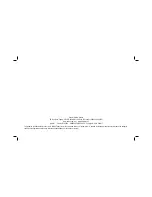
5
• Always make sure the saw is clean before using.
• Stop using this saw and have it properly serviced if any unusual noise or
abnormal operation occcurs.
• Always be sure all components are mounted properly and securely before using
tool.
• Always handle the saw blade with care when mounting or removing it.
• Always wait until the motor has reached full speed before starting a cut.
• Always keep handles dry, clean and free of oil and grease. Hold the tool firmly
with both hands when in use.
• Always be alert at all times, especially during repetitive, monotonous operations.
Always be sure of position of your hands relative to the blade.
• Stay clear of end pieces that may fall after cutting off. They may be hot, sharp
and/or heavy. Serious personal injury may result.
• Replace or repair damaged cords. Make sure your extension cord is in good
condition. Use only 3-wire extension cords that have 3-prong grounding-type
plugs and 3-pole receptacles that accept the tool’s plug.
• Air vents often cover moving parts and should be avoided.
Loose clothes,
jewelry or long hair can be caught in moving parts.
WARNING:
We recommend the use of a residual current device with a residual
current rating of 30mA or less.
WARNING: ALWAYS wear approved protective safety equipment complying with
the following standards:
• Eye protection: AS/NZS1337 Eye Protectors for Industrial Applications;
• Hearing protection: AS/NZS1270 Acoustics – Hearing Protection;
• Respiratory protection: AS/NZS1716 Respiratory Protective Devices.
WARNING:
Some dust created by power sanding, sawing, grinding, drilling, and
other construction activities contains chemicals known to cause cancer, birth defects
or other reproductive harm. Some examples of these chemicals are:
• lead from lead-based paints,
• crystalline silica from bricks and cement and other masonry products, and
• arsenic and chromium from chemically-treated lumber.
Your risk from these exposures varies, depending on how often you do this type of
work. To reduce your exposure to these chemicals: work in a well ventilated area, and
work with approved safety equipment, such as those dust masks that are specially
designed to filter out microscopic particles.
•
Avoid prolonged contact with dust from power sanding, sawing, grinding,
drilling, and other construction activities. Wear protective clothing and wash
exposed areas with soap and water.
Allowing dust to get into your mouth, eyes,
or lay on the skin may promote absorption of harmful chemicals.
WARNING:
Use of this tool can generate and/or disburse dust, which may cause
serious and permanent respiratory or other injury. Always use AS/NZS1716 approved
respiratory protection appropriate for the dust exposure. Direct particles away from
face and body.
WARNING: Always wear proper personal hearing protection that conforms to
AS/NZS1270 during use.
Under some conditions and duration of use, noise from this
product may contribute to hearing loss.
• The label on your tool may include the following symbols. The symbols and their
definitions are as follows:
V ................. volts
A ...............amperes
Hz ............... hertz
W ..............watts
min ............. minutes
...........alternating current
........ direct current
...........alternating or direct current
.............. Class I Construction
no ..............no load speed
...................
(grounded)
.............earthing terminal
.............. Class II Construction
..............safety alert symbol
...................
(double insulated)
BPM ..........beats per minute
…/min ........ per minute
RPM ..........revolutions per minute
IPM ............. impacts per minute
SAVE ALL WARNINGS AND INSTRUCTIONS
FOR FUTURE REFERENCE
COMPONENTS (Fig. 1)
WARNING:
Never modify the power tool or any part of it. Damage or personal
injury could result.
Содержание DWE560-XE
Страница 1: ...DWE560 XE DWE565 XE 184 mm 7 1 4 CIRCULAR SAW INSTRUCTION MANUAL ...
Страница 2: ......
Страница 17: ......
Страница 18: ......
Страница 19: ......






































